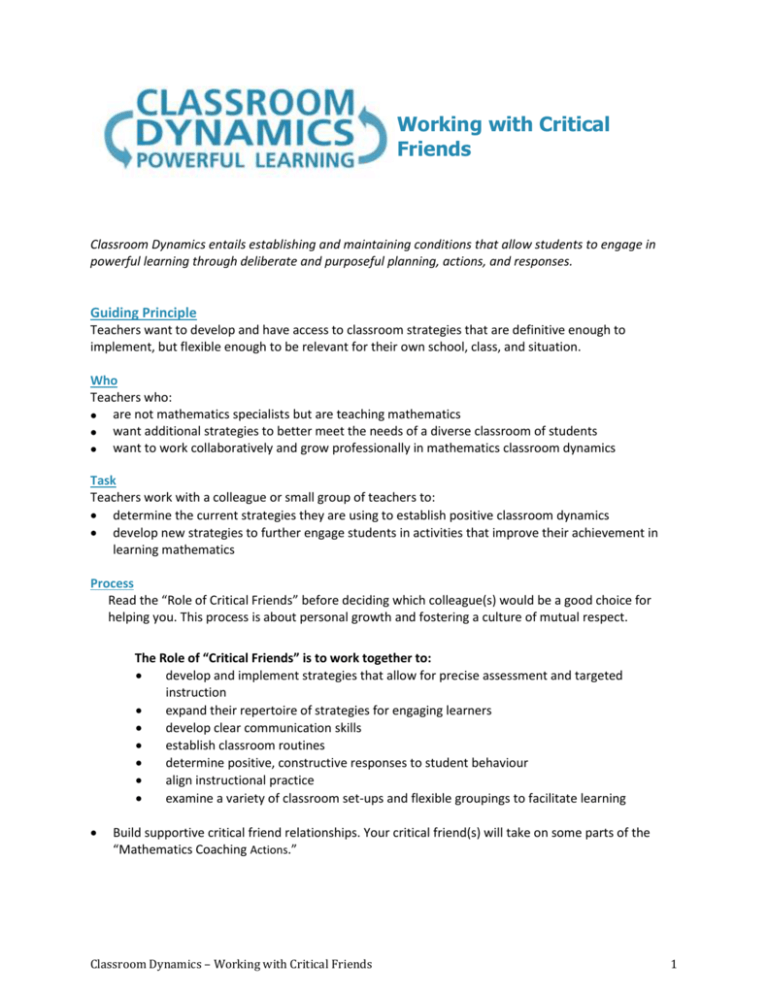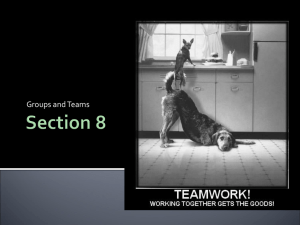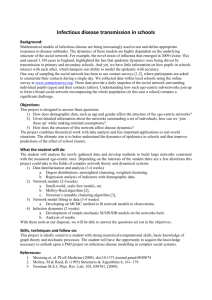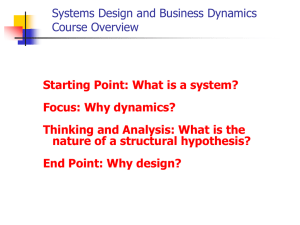GROWING SUCCESS IN THE MATHEMATICS CLASSROOM
advertisement

Working with Critical Friends Classroom Dynamics entails establishing and maintaining conditions that allow students to engage in powerful learning through deliberate and purposeful planning, actions, and responses. Guiding Principle Teachers want to develop and have access to classroom strategies that are definitive enough to implement, but flexible enough to be relevant for their own school, class, and situation. Who Teachers who: are not mathematics specialists but are teaching mathematics want additional strategies to better meet the needs of a diverse classroom of students want to work collaboratively and grow professionally in mathematics classroom dynamics Task Teachers work with a colleague or small group of teachers to: determine the current strategies they are using to establish positive classroom dynamics develop new strategies to further engage students in activities that improve their achievement in learning mathematics Process Read the “Role of Critical Friends” before deciding which colleague(s) would be a good choice for helping you. This process is about personal growth and fostering a culture of mutual respect. The Role of “Critical Friends” is to work together to: develop and implement strategies that allow for precise assessment and targeted instruction expand their repertoire of strategies for engaging learners develop clear communication skills establish classroom routines determine positive, constructive responses to student behaviour align instructional practice examine a variety of classroom set-ups and flexible groupings to facilitate learning Build supportive critical friend relationships. Your critical friend(s) will take on some parts of the “Mathematics Coaching Actions.” Classroom Dynamics – Working with Critical Friends 1 http://www.edugains.ca/newsite/math/coachformath.htm A Mathematics Coaching Cycle Classroom Dynamics – Working with Critical Friends 2 Mathematics Coaching Actions: Initial Conversations Information for the Critical Friend Take time to learn about the teacher(s) with whom you are working and the culture of their classrooms Ensure that your role is clear (i.e. supportive, non-evaluative) Listen actively as you share the “realities” of each other’s classrooms Develop a trusting relationship through respectful and private conversations Make suggestions, not judgments Ask questions to pull out each other’s strengths and determine what each of you consider to be obstacles to your students’ learning Create an environment which encourages collaboration Be willing to open up your classroom and share your resources Be prepared to engage in courageous conversations Refer to “Classroom Dynamics for Powerful Learning - Examined Through Checklists”. Each person should complete the Start-up Checklist and compare and discuss their responses. Mathematics Coaching Actions: Initial Conversations Refer to the chart and follow the instructions in the document entitled, “Classroom Dynamics for Powerful Learning - Examined through Self- Reflection.” Examine your classroom dynamics through three lenses: classroom management, set up, and relationship building. Work together to complete “Classroom Dynamics for Powerful Learning – Pre-Implementation Checklist.” Classroom Dynamics – Working with Critical Friends 3 Mathematics Coaching Actions: Co-planning Classroom Dynamics Pre-implementation Checklist Criteria Details Relationships Use your knowledge of the students as you prepare specific activities, groupings, and roles. 1. How will I interact with students as they enter the room so they are prepared for the activity? 2. How will I routinely interact with students (e.g., consistency, positive reinforcement, progression of consequences, humour, allowing choice)? 3. How will I encourage students individually so they engage in the lesson? Classroom Set Up Plan to purposefully match the classroom set up with the learning goals of the day. 1. How will the desks be arranged? 2. What is the plan to execute a quick transition, if needed? 3. How will materials be distributed and collected? Classroom Dynamics – Working with Critical Friends 4 Criteria Details 4. How will groups be formed (e.g., readiness, interest, learning style, student-to-student relationships)? 5. What instructions will be given to assign students roles and responsibilities? 6. How will I accommodate any students who have special needs? Classroom Management Align the established routines and norms of your classroom with the lesson. 1. What are the classroom expectations/policies regarding? attendance taking late arrivals starting a daily lesson washroom breaks personal technology use computer use food in classroom code of conduct/behaviour meeting deadlines and due dates 2. How will I respond to students who are late? 3. How will I adjust the groupings if students are absent? 4. How will I respond to and support students to get them back on track? Classroom Dynamics – Working with Critical Friends 5 Criteria Details 5. How will I support students/groups that have difficulty with the activity (e.g., rephrase instructions, scaffold questions, alternative manipulatives, give encouragement)? 6. How will students have access to the instructions throughout the lesson (e.g., posted, on a hand-out)? 7. What transition strategies will I use (e.g., raised hand cue, IWB icon)? Classroom Dynamics – Working with Critical Friends 6






